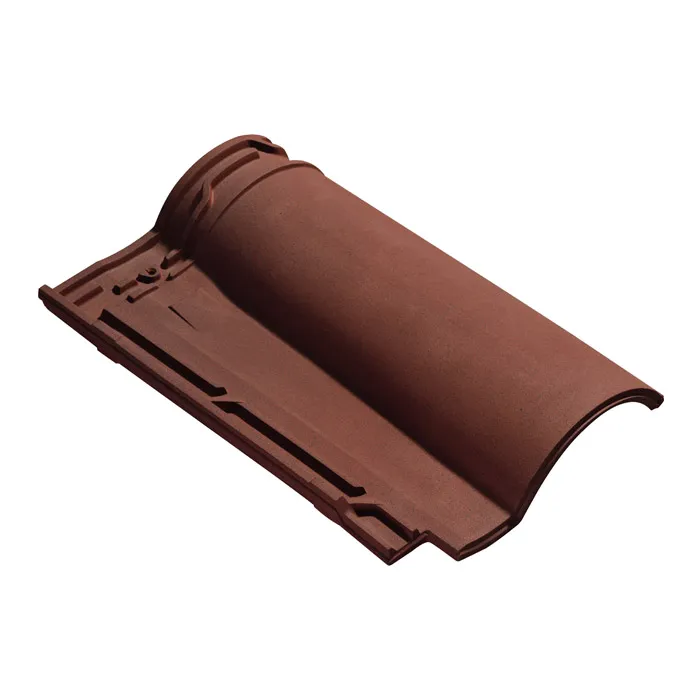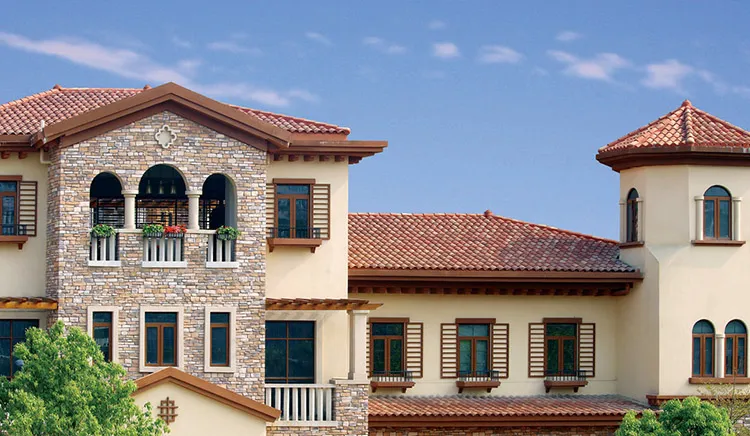As a long-standing and durable roofing material, clay tiles are widely used in houses of various architectural styles due to their superior waterproof performance, beautiful appearance and good durability. However, many people often face a question when choosing clay tiles as roofing materials: Do clay tiles need to be fixed with nails? How to install these tiles correctly?
This article will answer the fixing methods of clay tiles in detail, and through a detailed installation guide, help readers understand how to install clay tiles scientifically and reasonably. By mastering this knowledge, you can not only ensure the durability and beauty of the roof, but also ensure that it has sufficient stability in the face of bad weather.

Do clay roof tiles need to be fixed with nails?
Before discussing whether clay tiles need to be fixed with nails, we first need to understand the structure and function of clay tiles. Clay tiles are usually made of natural clay fired in a high-temperature kiln, with excellent waterproof and wind resistance, especially suitable for coping with greater climate change. However, since clay tiles are heavy, many people would naturally think that they can remain stable without nails.
Diversity of clay tile fixing methods
Traditionally, the installation method of clay tiles mainly relies on their own weight and overlapping design, with tiles stacked on top of each other to form a waterproof tile layer. In this design, the gravity of the tiles and the special laying method ensure that the tiles can be stably attached to the roof and will not move easily. Therefore, in some areas with low wind and mild climate, clay tiles can be laid without nails, relying on gravity and stacking structure.
However, in many modern buildings, especially in the face of extreme climatic conditions, nail fixing has become a common practice. In areas with strong winds, such as typhoons and storms, roof tiles face greater winds, and gravity and stacking alone cannot guarantee the stability of tiles. Therefore, additional fixing methods such as nails, hooks, and screws are particularly necessary.
The role of nail fixation
Nails play the following main roles in fixing clay tiles:
● Prevent tiles from loosening: By fixing with nails, tiles will not be displaced due to wind force, roof vibration, etc. Even in areas with high wind speeds, nails can effectively prevent tiles from being blown away or displaced by the wind.
● Improve the wind resistance of the roof: Nails strengthen the connection between clay tiles and the roof base, enhance the wind resistance of the entire roof system, and make the roof more stable in bad weather.
● Ensure safety: Especially when installing clay tiles on taller buildings, nail fixation can effectively reduce the risk of tiles falling and ensure the safety of the building's surroundings.
Therefore, although the traditional installation method of clay tiles does not necessarily require nails, in modern buildings, especially when safety and stability need to be increased, nail fixation is very necessary.
Scenarios for using nails
The following situations usually require the use of nails or other fixing methods:
● Roofs with large inclination angles: On roofs with large slopes, tiles are more susceptible to gravity and slide. Therefore, nailing can prevent tiles from sliding off high-slope roofs.
● High wind areas or areas with frequent bad weather: As mentioned earlier, in areas with frequent typhoons and hurricanes, the wind is extremely strong and tiles are easily overturned by strong winds. Using nails and other fixing methods can effectively enhance the wind resistance of tiles.
● High building height: In high-rise buildings, wind speeds are usually high, especially at the top of the building, so fixing tiles is particularly important.

How to properly install clay roof tiles?
The installation of clay tiles is a process that requires professional skills and experience. If not installed properly, it may cause roof leaks, tile displacement, and even affect the overall structure of the house. Therefore, the following are the standard steps and precautions for installing clay tiles.
1. Preparation
Before installing clay tiles, sufficient preparation is required. First, make sure that the roof base is solid and flat, and has a good drainage slope. Preparation includes:
● Check the roof base: Clay tiles usually need to be laid on a solid roof base. The roof base can be wood, concrete or steel structure. Regardless of the material, it must be ensured to be strong and durable, and the surface must be flat and without bulges.
● Install waterproof layer: Lay waterproof membrane or waterproof roll on the roof base to ensure the waterproof performance of the roof. The waterproof layer is a very critical part of the entire roof structure, which can effectively prevent water from penetrating into the building.
● Prepare tiles and installation tools: Make sure all tiles are intact and of uniform size. At the same time, prepare installation tools such as hammers, nails, screws, drills, etc.
2. Tile laying steps
The tile laying process is a systematic work, which usually needs to be divided into the following steps:
a. Install eaves tiles: First, lay clay tiles from the eaves. The installation of eaves tiles determines the drainage effect of the entire roof, so it must be very precise. The eaves tiles should extend outward for an appropriate distance to ensure that rainwater can be drained smoothly without seeping into the house. Use nails to firmly fix the first row of eaves tiles to the roof base. Usually, each tile requires at least one nail. When installing, be sure to nail the nail into the tile's fixing hole to avoid breaking the tile directly.
b. Lay the remaining tiles: Lay the tiles from the eaves upward, making sure that each row of tiles overlaps the tiles below appropriately. This overlapping design can effectively prevent rainwater from seeping into the gaps between tiles. During the laying process, regularly check whether the tiles are arranged neatly to ensure that the drainage direction is correct. The overlapping part of the tiles is usually 1/3 to 1/4 of the tile width, which is adjusted according to different types of tiles and roof slopes.
c. Install ridge tiles: Ridge tiles are used at the highest point of the roof and are usually wider than other tiles. The installation of ridge tiles also requires the use of nails or hooks to ensure that the top of the roof has sufficient protection. When installing ridge tiles, pay special attention to waterproofing. It is recommended to lay an additional layer of waterproof material under the ridge to prevent rainwater from seeping into the gaps in the ridge.
d. Use nails or hooks to reinforce: During the entire tile laying process, especially at the edges and corners of the roof, nails, hooks or other fixings must be used to reinforce the tiles to prevent the tiles from loosening or shifting during wind or natural settlement.
3. Installation details and precautions
● Correctly handle the overlapping parts of the tiles: The overlapping of tiles is one of the most important steps in the installation of clay tiles. It is necessary to ensure that there is enough overlap between each tile to prevent rainwater from penetrating. Normally, the overlapping part should account for at least 1/4 to 1/3 of the length of the tile.
● Check waterproofness: After laying, check the waterproofness of each gap and joint. Especially in the ridge and edge parts, waterproofing measures must be in place to prevent rainwater from entering the room through the gaps.
● Use appropriate tools: When installing clay tiles, special tools must be used to operate, and avoid hitting the tiles with force to prevent the tiles from breaking or damaging.

How to maintain clay tiles after installation?
After the installation of clay tiles is completed, the fixing of the tiles should be checked regularly, especially after extreme weather such as strong winds and heavy rains. Check whether the tiles are loose or shifted, and repair them in time. In addition, clay tile roofs are prone to accumulation of dust or fallen leaves, which may affect drainage, and long-term accumulation will cause corrosion on the tile surface. Therefore, regular cleaning of the roof surface to keep it clean is an important measure to extend the service life of the tiles. If the tiles are found to be damaged or cracked, they need to be replaced in time to prevent further damage from extending to other areas.

